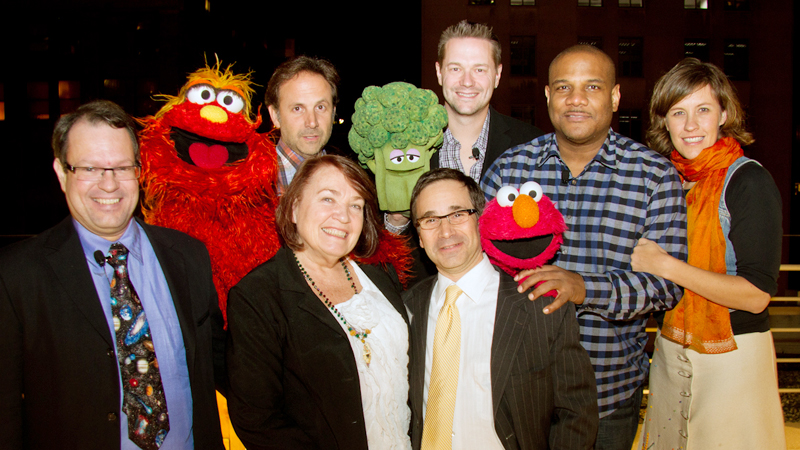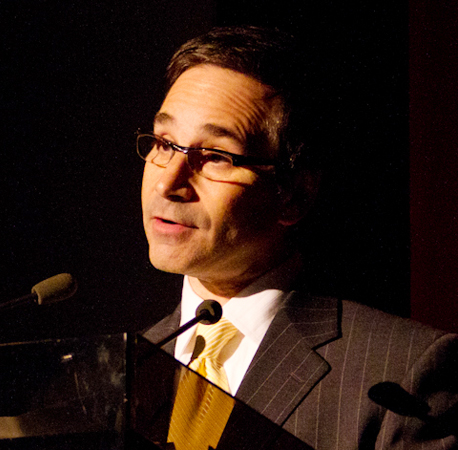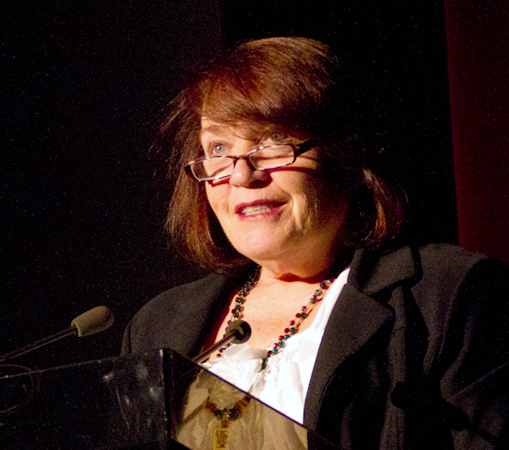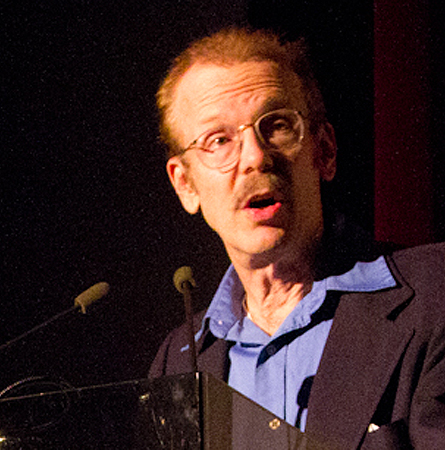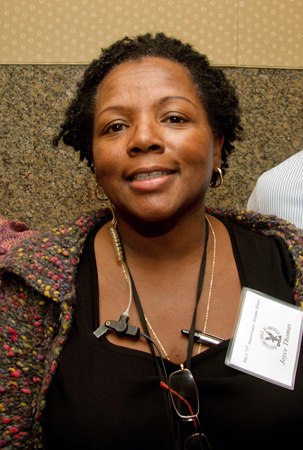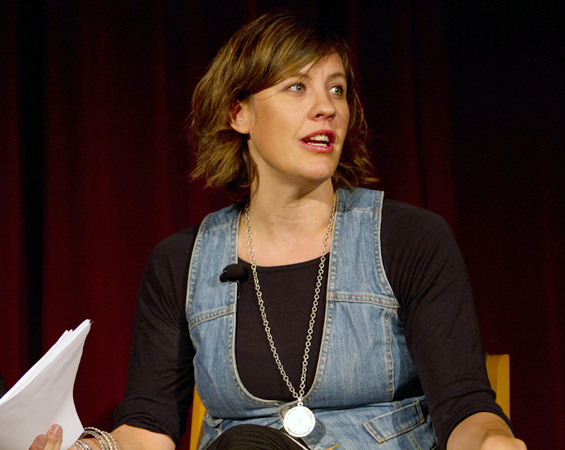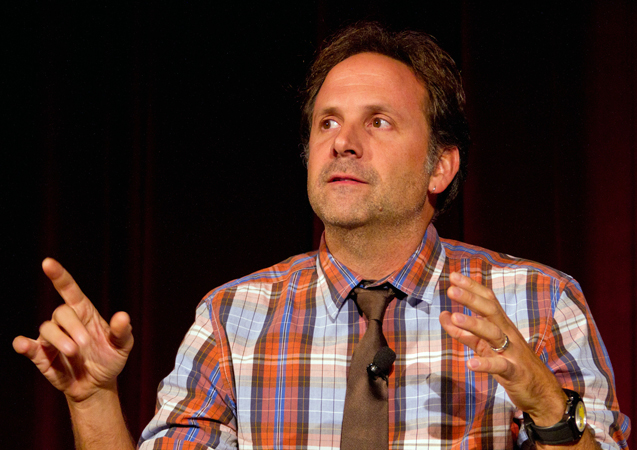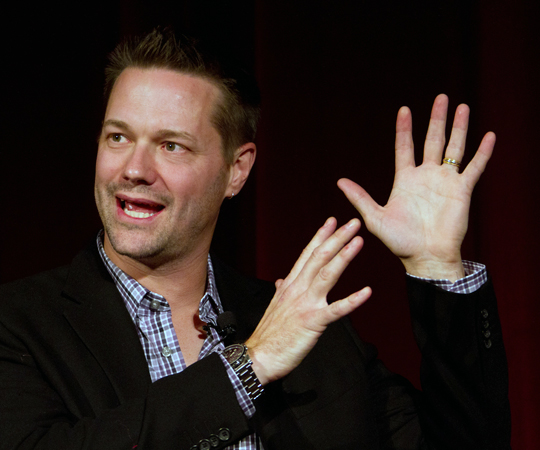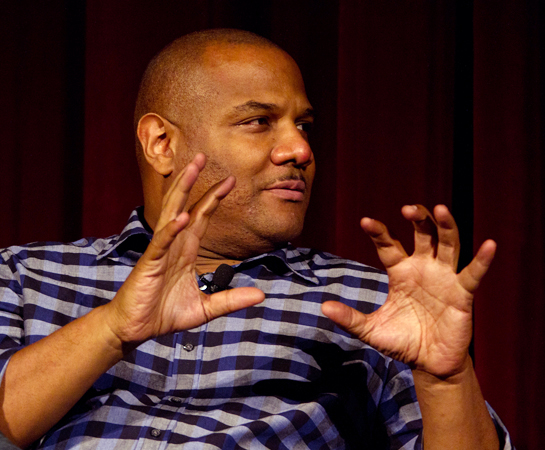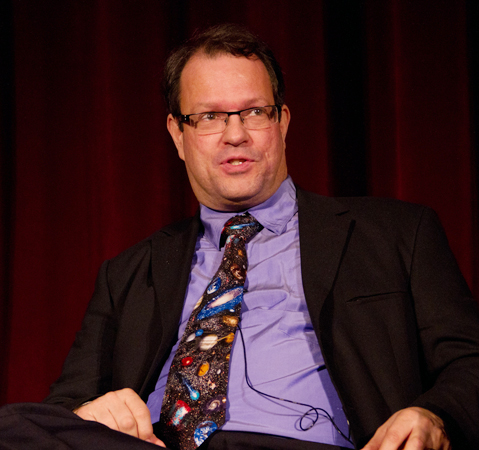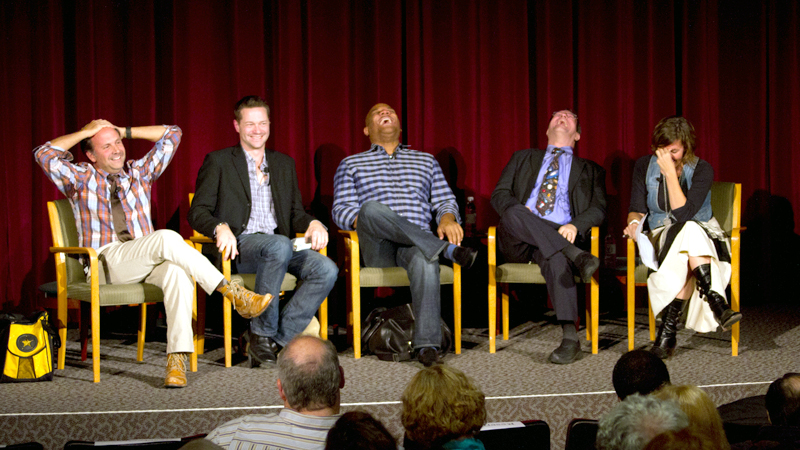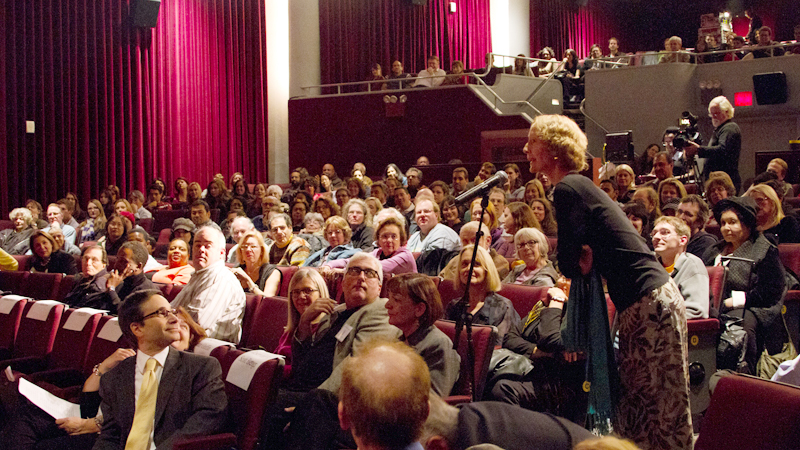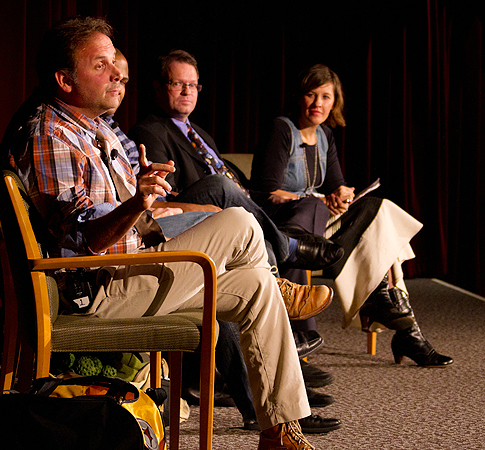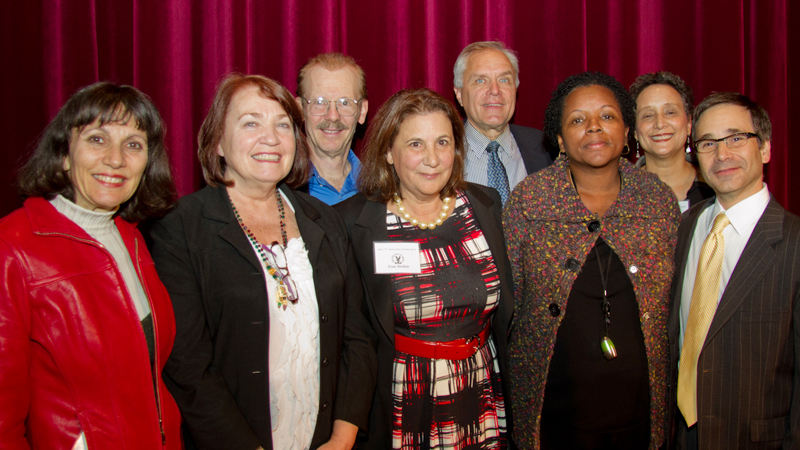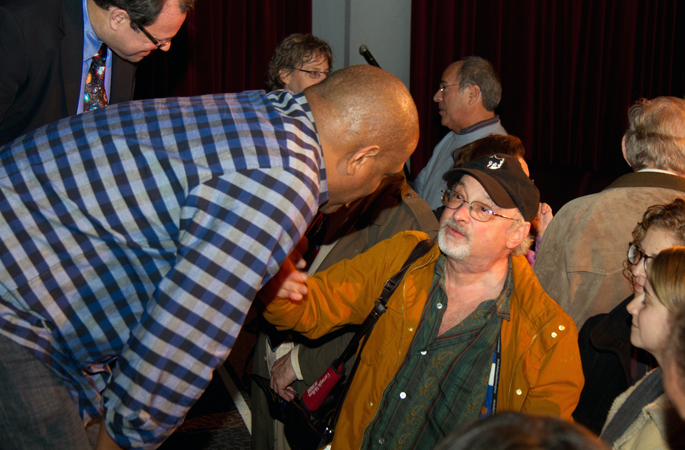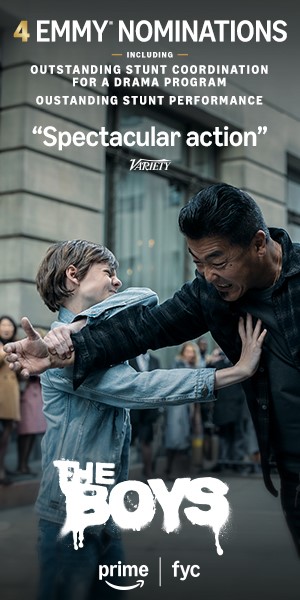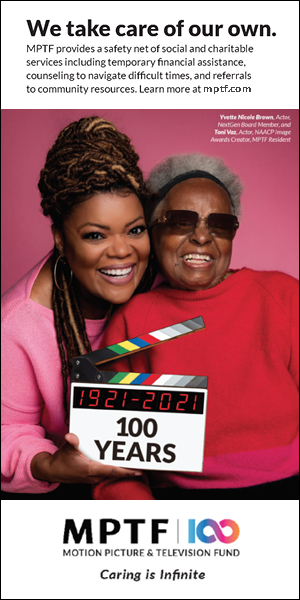Still photos by Donald Rasmussen
On November 2, attendees got a “behind-the-scenes” look at the work of the multi-talented directorial teams that helped make Sesame Street the show that set the bar for children’s programs. DGA members and guests gathered at the Guild’s New York Theater as Director/Puppeteers Kevin Clash (Elmo), Joey Mazzarino (Murray), Matt Vogel (Big Bird), and Associate Director Ken Diego engaged in a lively and demonstrative discussion of their work during a conversation moderated by Director/Web Producer Nadine Zylstra. The evening was presented by the AD/SM/PA Council East and organized by a special committee chaired by Council First Vice Chair Joyce Thomas.
The audience was welcomed by DGA Assistant Secretary-Treasurer Scott Berger, who took a moment to note the passing of the Guild’s Secretary Treasurer Gil Cates and lead the audience in a moment of silence.
“Some years ago, the cast of Sesame Street needed to deal with the death of one of their own on-air characters; Mr. Hooper, the shop owner. Sesame Street sensitively explained the passing of Mr. Hooper and the show, of course, went on. Gil would want nothing less,” said Berger. “When it comes to children’s programming, nothing has been more of a game-changer than Sesame Street. Tonight the Guild’s Eastern AD/SM/PA Council showcases the truly talented director teams that are an important part of why Sesame Street is the most beloved and influential children’s show in history.”
Berger was followed by AD/SM/PA Council East Chair Joan Griffin who spoke on behalf of the Council. “Without the Associate Directors, Stage Managers and Production Associates of the DGA, productions would not get produced, scripts would not get managed, and stages would be lost to chaos and disorder. We understand the concept of collaboration and the value of teamwork … and we recognize it when we see it successfully implemented by others. Sesame Street exemplifies these qualities. For 42 years they have pushed the envelope, demonstrated diversity, and challenged the medium and the message of television to educate and engage children. A large part of the show’s success is its incredibly talented directorial team. Not only do they direct, produce and write ‑ but they do it all with their hands immersed in colorful fur!”
The audience was then treated to a special appearance by Sesame Street muppets Elmo and Murray, brought to life by Clash and Mazzarino. They interacted with Council member Terry Benson who delivered his reflections on the show.
“It was the best first job ever,” said Benson. “I had the best mentor a Stage Manager could have, the great Chet O’Brien. He had a courtly old school manner, he showed respect for everyone. We were doing something revolutionary and we knew it. Cultural issues were broached by puppets in ways actors could not. It was 1970 and we were shaking up the education world while the rest of the world was shaking too. Stage managing this show was special, and my Stage Manager friends who do it now say that hasn’t changed.”
Benson introduced a video that looked back over 42 years of Sesame Street history and another directed by Council member Toni Slotkin that revealed the present approach to integrating puppets and people and introduced the evening’s panelists.
After taking the stage, moderator Zylstra set the mood by stating, “All of the people on this panel do more than direct. We’re driven by the thought we’re going to leave the viewers that watch the show better off than they were when they started.”
She then kicked things off by asking each of the panelists to tell how they became involved in the show.
Mazzarino recalled having the opportunity to watch Jim Henson direct an episode and being so impressed by what he saw that he knew he’d found his life’s calling. Still after working for years on the show as a puppeteer and a writer, he was initially hesitant when first approached to direct. “Then I realized, as puppeteers we’re sort of directing because we’re watching ourselves all the time, so I know how to compose that shot, I’ve been doing it for 18 years! Now I love it because I feel like an independent filmmaker.”
Vogel’s path was similar, starting out as a puppeteer as a child and in college. After being hired by the Sesame Workshop, his big break came when he found himself among a group of prospective performers hoping to be picked by Big Bird’s creator and performer Caroll Spinney and trained to bring life to the character. “When I was introduced to Carroll he stopped and said ‘Oh… Vogel! Your name means “bird” in German. This may be the job for you!’ Now I’ve been with the show for 15 years and directing for five.”
Clash joked that anyone who wanted to know his beginnings just had to go see the new documentary Being Elmo: A Puppeteer's Journey directed by Constance Marks and Philip Shane. He took the opportunity to heap praise on the late Director Jon Stone. “I learned a lot from Jon. He was amazing. He always said to us, ‘If you make me laugh, I’ll keep the camera on you.’ He respected children and they loved him.”
Diego talked about the feeling of becoming immersed in that world. “I was a freelance Associate Director and Director, but once I became a part of Sesame Street… you just want to find a way to be around there, keep contributing and stay involved. That’s why I evolved into a Director who still works there as an AD.”
The panelists then spoke on a variety of other subjects including what the show has tried to do, how it changed over the years, what is happening now, and a look forward to the future of Sesame Street.
After the discussion, the floor was opened to questions from the audience.
